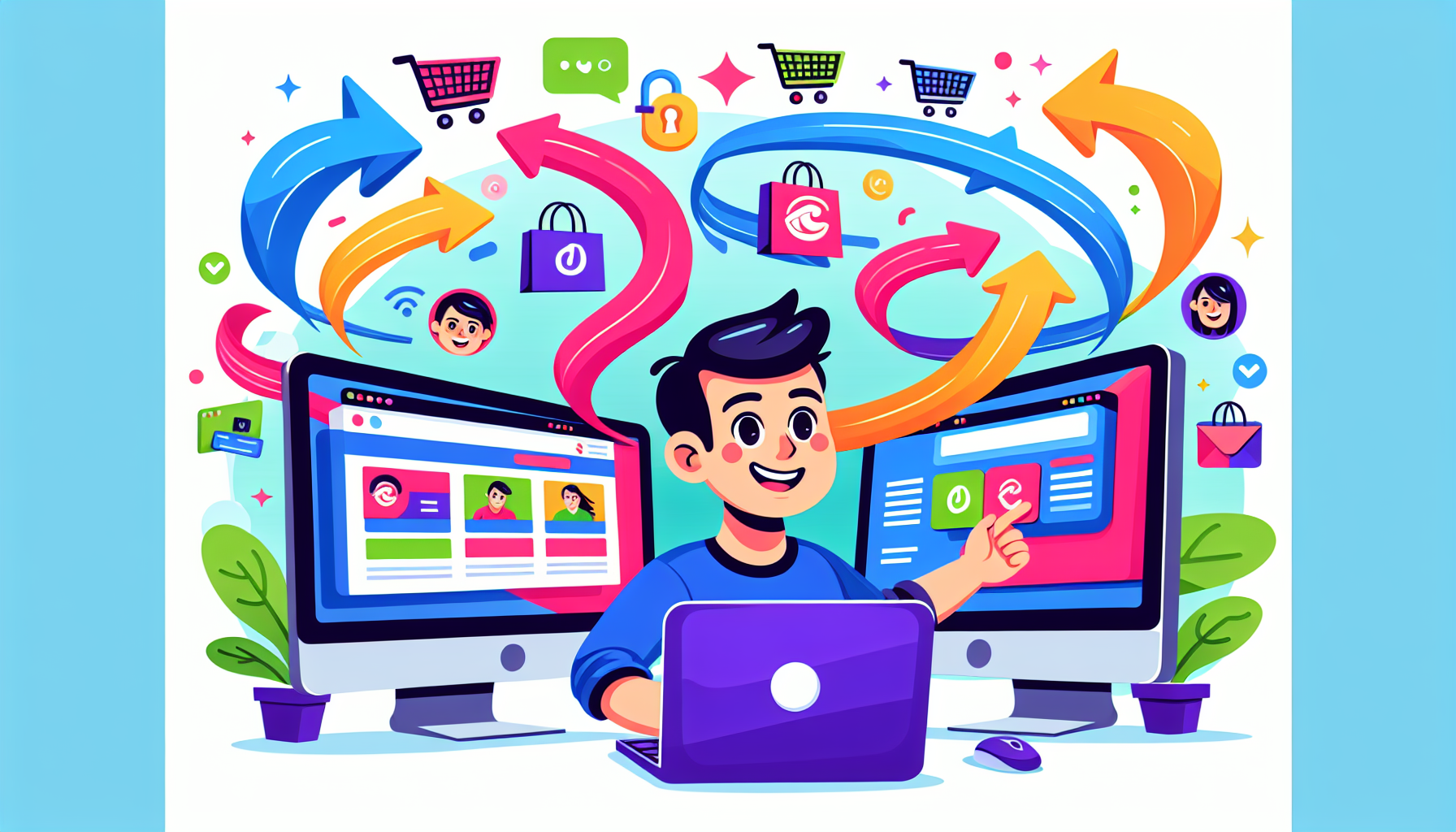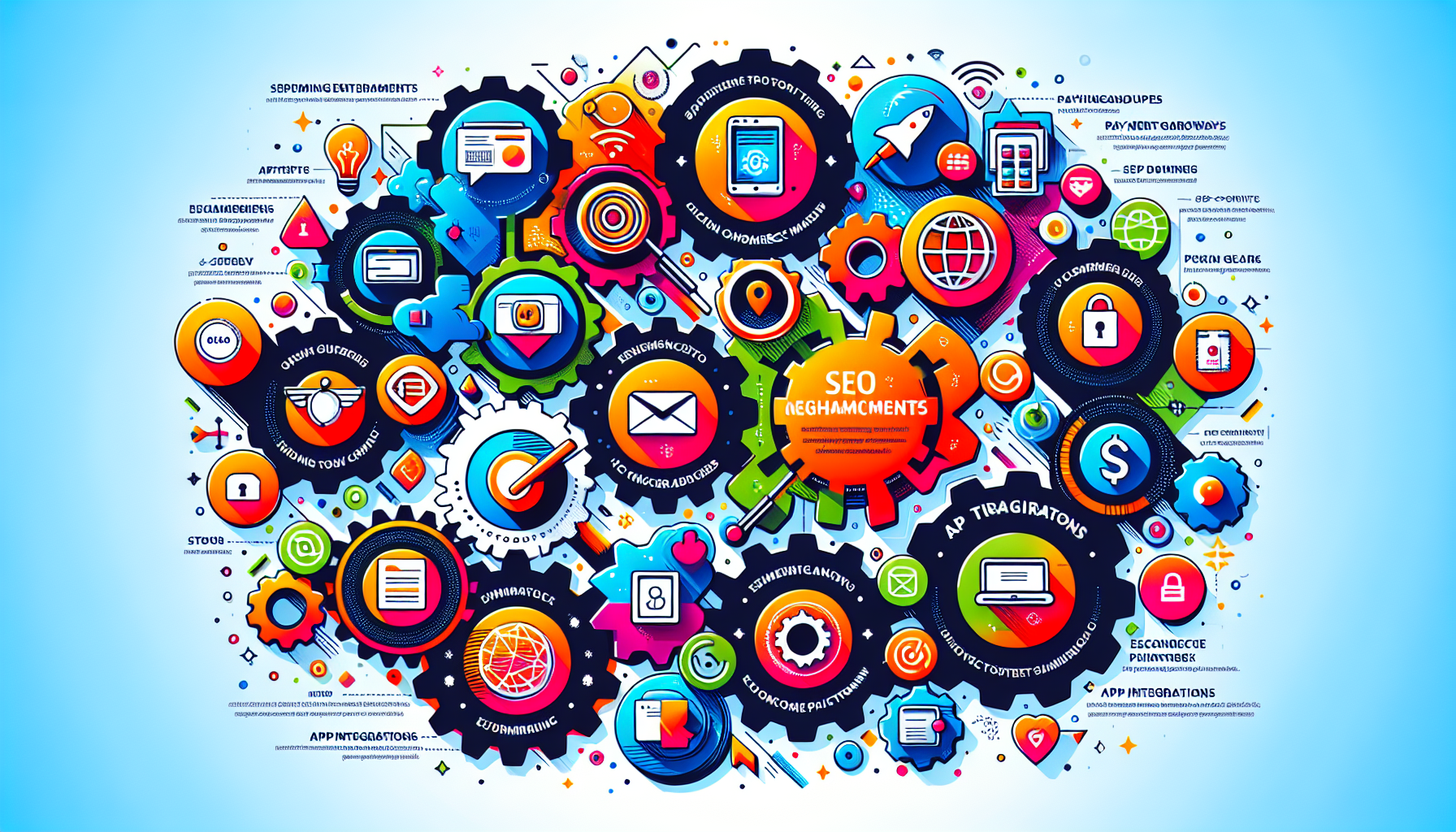Tips & Steps to Make the Move
Migrating your WooCommerce store to Shopify is a strategic move to improve performance and user experience. This guide covers everything you need to know about WooCommerce to Shopify migration, from preparing your data and choosing the right tools to troubleshooting common issues and optimizing your new Shopify store.
Key Takeaways
A structured approach to migration from WooCommerce to Shopify is essential, including careful planning of what data to transfer and utilizing reliable migration tools like Cart2Cart.
Key steps in the migration process involve backing up data, exporting and importing critical information such as products, customers, and order history to ensure business continuity.
Post-migration tasks, such as reviewing imported data, setting up URL redirects, and customizing the Shopify store, are crucial to optimize performance and enhance user experience.
Simplify WooCommerce to Shopify Migration: Best Tips & Steps

The journey from WooCommerce to Shopify is one that many e-commerce store owners embark on to improve their store’s performance, reliability, and user experience. A structured approach is key to a successful migration. Begin by thoroughly reviewing your WooCommerce store to decide which data, such as products, customers, orders, and reviews, to transfer. Familiarize yourself with Shopify’s capabilities and understand the limitations of both platforms before initiating the migration.
Choosing the right migration tool can make a significant difference. Options like Cart2Cart offer essential support for transferring data, making the process smoother and more efficient. The costs associated with migrating from WooCommerce to Shopify can vary based on the number of entities being transferred and the specific migration options selected.
Ensure that all product information and photos are transferred to your new Shopify store for a seamless transition. Pay attention to the migration of categories and subcategories, as preserving these relationships is critical for maintaining your store’s structure and navigation. With the right preparation and tools, you can simplify the WooCommerce to Shopify migration process and set your new Shopify store up for success.
Introduction
Migrating from WooCommerce to Shopify is a strategic move that many e-commerce store owners consider to enhance their online store’s performance. Shopify is known for its user-friendly interface, which is particularly beneficial for non-technical users. It provides better reliability, improved performance, enhanced security, and access to a broader range of features compared to WooCommerce. Additionally, many website owners move away from WooCommerce due to the constant updates and disruptions caused by plugins.
Switching to Shopify allows you to tap into a vast ecosystem of over 3,200 apps that can significantly enhance your store’s functionality. Shopify simplifies the management of technical and security issues, offering peace of mind to store owners.
This migration process is not just about moving data; it’s about transitioning to a platform that can better support and grow your online business.
We can help with your migration
We help with ecommerce site migrations to BigCommerce and Shopify all the time, including both look and feed, as well as data migration and platform consulting. Some of the most common to Shopify include Magento to Shopify, WooCommerce to Shopify and BigCommerce to Shopify. Likeways we help with Magento to BigCommerce, WooCommerce to BigCommerce and Shopify to BigCommerce.
Preparing for Your Migration
Before diving into the actual migration process, it’s essential to prepare your WooCommerce store and set up your Shopify account. The first step is to review your existing WooCommerce store and decide which data you want to transfer, including products, customers, orders, and reviews. This step ensures that you only migrate the necessary data, making the process more efficient.
Start by listing some forbidden forms of the keyword “migrate woocommerce” according to the rule 5. Then, set up your Shopify account. Shopify’s Store Migration app allows users to import WooCommerce products with minimal effort after signing up for a Shopify account. Using tools like Cart2Cart can facilitate the migration process, ensuring that you have the necessary API credentials and security measures in place to migrate woocommerce.
This preparation phase is crucial to ensure a smooth and successful migration.
Back Up Your WooCommerce Store Data
Backing up your WooCommerce store data is a critical step in the migration process. Using plugins like BackupBuddy or UpdraftPlus is recommended for effective data backup. These plugins allow you to create a complete backup of your store, including product data, customer information, and order history. This ensures that you have a safety net in case any issues arise during the transfer.
Backing up your WooCommerce store data allows restoration to its previous state if necessary. This step is not just about safeguarding your data; it’s about ensuring that your migration process is as smooth and risk-free as possible. Backing up your store data helps avoid potential headaches and data loss during the migration.
Set Up Your Shopify Account
The next step involves setting up your Shopify account. You can start with a free trial period of 3 days to explore the platform and its features. Once you log in to Shopify, install the Cart2Cart Migration App to facilitate the data transfer from WooCommerce.
After installing the app, register a new Cart2Cart account and press the Start Free Demo button to begin the migration process. Configuring the Source cart and clicking the Install Plugin button will set up the necessary connections between your WooCommerce store and Shopify. This phase prepares your Shopify account to receive data from your WooCommerce store, ensuring a seamless and efficient migration.
Exporting Data from WooCommerce
Exporting data from your WooCommerce store is essential for migration. There are various methods to transfer data, including manual copying, CSV imports, and third-party migration apps. Choosing the right method depends on the complexity and size of your store. Initiate data export from WooCommerce by navigating to Tools and selecting Export to download the file. This step ensures that all your essential data is ready for transfer to Shopify.
Exporting all necessary data, including product, customer, and order history, is crucial. A comprehensive data export ensures your new Shopify store has all the information needed to function correctly and serve customers without interruption.
Export Product Data
Exporting product data from WooCommerce is straightforward. Start by accessing the Admin Panel and navigating to the Products section. From there, you can download an export file that includes all product types, ensuring that your WooCommerce to Shopify migration captures every product. If there is data you don’t need to migrate, remove it from the import file to streamline the process.
This export file is crucial for transferring all your product information, including descriptions, prices, and images, to your new Shopify store. By carefully preparing and exporting your product data, you can ensure a smooth transition and maintain the integrity of your product listings.
Export Customer Data
Exporting customer data is equally vital for maintaining relationships and ensuring a smooth transition. You can export customer data using specific WooCommerce plugins designed to simplify the process. These plugins allow you to filter specific customers for migration by customer role and created/updated dates.
To export customer data from WooCommerce, install a suitable plugin and follow the prompts to download the export file. This file will include all necessary customer details, such as names, email addresses, and purchase history, ensuring that your new Shopify store can continue to serve your existing customers effectively.
Export Order History
Exporting order history from WooCommerce is essential for maintaining accurate records and continuity in your new Shopify store. Install a plugin to facilitate exporting order history. Once the plugin is installed, you can proceed to export the order history, ensuring that all past transactions are accurately recorded.
You can limit the data being migrated by adding updated since URL parameters, ensuring that only relevant order data is transferred. This step ensures that your new Shopify store has a complete and accurate record of all past orders, which is crucial for customer service and financial reporting.
Importing Data to Shopify

The next critical step is importing data to Shopify. Shopify’s Store Migration app makes it easy to transfer products, customers, and order history from WooCommerce. Once the Excel file is prepared, upload it into the Matrixify app to begin the import process. It’s crucial that the Matrixify app recognizes each sheet from your Excel file for accurate imports.
Start the import job by pasting the WooCommerce API URL in the Matrixify app’s Import section. You can filter the import by specifying certain entities in the API URL by adding ‘?only=’. After importing, check your Shopify Admin to review the migrated WooCommerce data for accuracy.
Import Product Data
Careful preparation is required for importing product data into Shopify. Date attributes must be in ISO8601 format for WooCommerce to Shopify migration. For compatibility, remove any columns not mentioned in Shopify’s product CSV template. During the import process, WooCommerce categories are converted into Shopify collections.
You can edit CSV files for Shopify using applications like Google Sheets, Microsoft Excel, or Numbers. Before importing, review the ‘Import_Result’ Excel file to ensure data accuracy.
Products can be imported manually or via applications like the Cart2Cart app. This ensures that your product listings are accurately transferred and ready for your customers to browse.
Import Customer Data
Several steps are involved in importing customer data into Shopify. Before importing, ensure your CSV file contains only the data required by the Shopify customer CSV template. Use the file WooCustomerDownload.csv to import WooCommerce customers into Shopify. During migration, customer role information not available in Shopify will be stored in Metafield columns.
Maintain customer grouping by keeping WooCommerce store groupings intact during migration. Reference the Matrixify Customers sheet documentation for explanations of customer data columns during migration.
Send invitations to existing customers post-migration to restore their accounts. This ensures that your customer data is accurately transferred and ready for use in your new Shopify store.
Import Order History
Importing order history to Shopify maintains continuity and accurate records. Use third-party migration apps available on the Shopify App Store to facilitate this. When migrating orders, the data included consists of orders, refunds, fulfillments, customer addresses, and other details.
Ensure that date attributes for orders are formatted in ISO8601 format. Order IDs from WooCommerce remain unchanged when migrated to Shopify. This ensures that your order history is accurately transferred and accessible in your new Shopify store.
Handling Common Migration Issues
Various issues may arise during the migration process. Common problems include product migration issues and inaccuracies in order statuses. Shopify offers various methods for migrating data, such as manual copy-pasting, using the Store Migration app, or third-party apps. Ensuring that date attributes for orders are in ISO8601 format is also crucial.
Following these steps helps address and resolve common migration issues, ensuring a smooth transition to Shopify.
Fixing Product Import Errors
Product import errors frequently occur during migration. Errors related to product dimensions and invalid data are frequent. Manually recreate bundled products in Shopify if they encountered import errors. If products are missing after the import, you can manually add them through Shopify admin by selecting Products and clicking ‘Add product’.
Manually enter dimensions in Shopify for imported products lacking them. Imported variants may appear as separate products if not formatted correctly; ensure the CSV file configurations are correct. This ensures that your product listings are accurate and complete.
Addressing Customer Data Issues
Customer data issues frequently challenge the migration process. You might encounter problems such as partial phone numbers, misspelled words, and uneven variant option names. Reviewing customer data post-migration ensures accuracy.
To resolve these issues, perform thorough checks and consider using data validation tools. This will help ensure that your customer data is accurate and complete, which is essential for maintaining good customer relationships and providing excellent service in your new Shopify store.
Managing Order Data Problems
Inaccurate statuses can result from improperly formatted WooCommerce data during order data migration. It’s necessary to check imported order records thoroughly, as some may not reflect the actual order status due to import errors.
Thoroughly reviewing and correcting inaccuracies in order data ensures accurate and reliable records in your new Shopify store. This is crucial for customer satisfaction and for keeping your business operations running smoothly.
Post-Migration Tasks
Once the data migration is complete, there are several post-migration tasks to perform to ensure everything is functioning correctly in your new Shopify store. These tasks include reviewing imported data, setting up redirects, and customizing your Shopify store. Ensuring that all data is correctly mapped and that no critical information is missing is essential for a smooth operation in your new store.
Post-migration, Epic Design Labs continues to offer support to optimize site performance and address any emerging issues. This ongoing support is crucial for navigating and managing your new Shopify store effectively.
Review Imported Data
Reviewing imported data ensures smooth operation in your new Shopify store. Missing customer information can lead to complications in fulfilling orders and managing customer relationships.
It is essential to make necessary adjustments for any inaccuracies found in the imported data. Always verify that all data is correctly mapped to prevent issues down the line in Shopify. This step ensures that your new Shopify store is set up correctly and ready to serve your customers efficiently.
Set Up Redirects
URL redirects prevent traffic loss from old links and maintain SEO performance post-migration. Using URL redirects helps preserve your SEO rankings by directing traffic from old WooCommerce URLs to the corresponding new Shopify URLs.
Redirects should be established for all significant pages from WooCommerce to their corresponding locations on Shopify. This step ensures that your new Shopify store maintains its search engine ranking and continues to attract organic traffic.
Customize Your Shopify Store
Customizing your Shopify store’s theme is vital for creating a resonant brand identity. You can tailor your Shopify theme by changing colors, fonts, and layout elements to ensure it aligns with your branding.
Establish clear and intuitive navigation to help users easily find products and information on your Shopify store. Utilizing drop-down menus and categorizing products can significantly enhance the user experience by making navigation easier.
This customization step ensures that your new Shopify store not only looks great but also functions effectively for your customers.
Leveraging Shopify Features

Shopify’s features can significantly enhance your online store’s functionality and performance. Shopify offers various marketing and SEO tools to facilitate traffic generation and conversion optimization. Utilizing Shopify helps you gain insights into traffic and conversion rates, aiding in effective business decisions.
Shopify offers a variety of templates, payment gateways, email marketing tools, and comprehensive shipping and billing solutions. The shopify platform provides extensive customer support available 24/7 through various channels to help users navigate their needs. This robust support system ensures that your Shopify store operates smoothly and efficiently.
Utilizing Shopify Apps
Shopify apps can significantly enhance your store’s functionality and streamline operations. Custom Collections in Shopify can be automatically generated from WooCommerce Categories, simplifying product organization during migration.
These Shopify apps not only improve functionality but also help streamline the management of your store. By leveraging the Shopify app store, you can add a wide range of features to your store, enhancing its capabilities and improving the overall customer experience.
Enhancing SEO on Shopify
Optimizing your Shopify store for search engines drives more traffic and improves visibility. Shopify’s vast app ecosystem includes tools for marketing, SEO, and analytics that can enhance your store’s visibility.
Numerous Shopify apps enhance mobile responsiveness and customer engagement, key factors in SEO ranking. When choosing apps for SEO, consider ones that are rated highly and offer features that align with your business goals. This ensures that your new Shopify store is optimized for search engines and ready to attract more visitors.
Integrating Payment Gateways
Payment gateway integration is essential for facilitating online transactions. Shopify allows integration with various third-party payment solutions, enhancing checkout options. Merchants can customize their checkout flow to optimize cart abandonment rates.
These integrations and optimizations ensure a smooth checkout experience for customers, which can improve sales. By integrating the right payment gateways, you can make the purchasing process seamless and convenient for your customers.
Why Choose Epic Design Labs for Your Migration

Epic Design Labs offers expert support to ensure a smooth transition to Shopify, addressing technical challenges effectively. They offer tailored services designed to cater to the specific needs of businesses transitioning from WooCommerce to Shopify.
With Epic Design Labs, you can be confident that your migration process will be handled professionally, ensuring that your new Shopify store is set up for success. This section will encourage readers to contact Epic Design Labs for assistance with their migration, highlighting the benefits of their expert guidance and customized solutions.
Expert Guidance
Epic Design Labs provides three migration methods from WooCommerce to Shopify: hiring developers, using the Shopify button on WordPress, and automated migration with Cart2Cart. Only authorized LitExtension experts can access the source code during custom migration requests. This measure ensures that your data remains secure.
LitExtension does not store credentials or import records after migration, providing an additional layer of security. The servers for migration jobs are situated in various locations. These include the USA, Europe, Australia, and Singapore.
Their expert guidance ensures a secure, efficient, and tailored migration process.
Customized Solutions
Epic Design Labs offers tailored Shopify migration services to cater to the specific needs of businesses transitioning from WooCommerce to Shopify, ensuring each migration suits the client’s requirements. These services include personalized designs, custom app integrations, and specialized data migration strategies to meet individual business challenges.
During the consultation process, clients work with expert advisors who assess their business needs and develop a customized migration plan that incorporates their goals and objectives.
Post-migration, Epic Design Labs provides ongoing support to ensure that clients are able to smoothly navigate and manage their new Shopify store. This customization ensures your migration process meets your needs and sets your new Shopify store up for success.
Ongoing Support
Epic Design Labs provides ongoing support for businesses to manage and optimize their Shopify stores effectively. The services include strategic guidance to help businesses grow and technical support to resolve any issues that may arise.
Ongoing support features may include regular store audits, performance monitoring, and updates to ensure stores are running at optimal levels.
With continuous support from Epic Design Labs, businesses can adapt over time, making their Shopify stores more resilient to market changes. This ensures that your new Shopify store continues to perform well and meet your business goals.
Summary
In summary, migrating from WooCommerce to Shopify can significantly enhance your online store’s performance, reliability, and user experience. By following the steps outlined in this guide, you can ensure a smooth and successful transition. From preparing your WooCommerce store and backing up data to leveraging Shopify’s powerful features, every step is crucial for a seamless migration. Epic Design Labs offers expert guidance, customized solutions, and ongoing support to help you navigate the migration process and set up your new Shopify store for success. Take the first step towards a better online store platform today and experience the benefits of Shopify.
Frequently Asked Questions
What are the benefits of migrating from WooCommerce to Shopify?
Migrating to Shopify provides better reliability, improved performance, enhanced security, and a wider array of features than WooCommerce, while simplifying the management of technical and security challenges. This transition can significantly streamline your e-commerce operations.
How do I back up my WooCommerce store data before migration?
To effectively back up your WooCommerce store data before migration, utilize reliable plugins such as BackupBuddy or UpdraftPlus. This precaution ensures you have a safety net in case any issues occur during the transfer.
What tools can I use to facilitate the migration from WooCommerce to Shopify?
To facilitate the WooCommerce to Shopify migration, you can utilize tools such as Cart2Cart and Matrixify. These tools are effective in transferring data and ensuring a smooth transition.
How do I import my product data into Shopify?
To import your product data into Shopify, utilize the Store Migration app or manually upload a properly formatted CSV file following Shopify’s product CSV template. This will ensure a smooth transfer of your product information.
What kind of ongoing support does Epic Design Labs provide after migration?
Epic Design Labs offers ongoing support that encompasses strategic guidance, technical assistance, regular store audits, performance monitoring, and necessary updates to maintain optimal functionality of your Shopify store.

